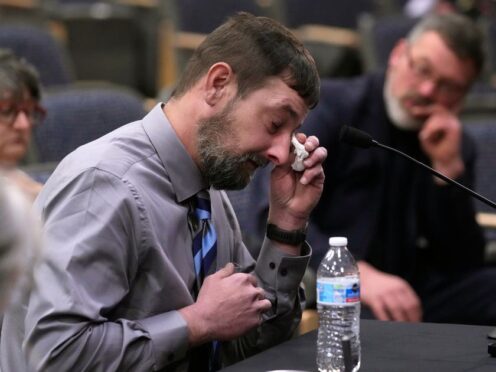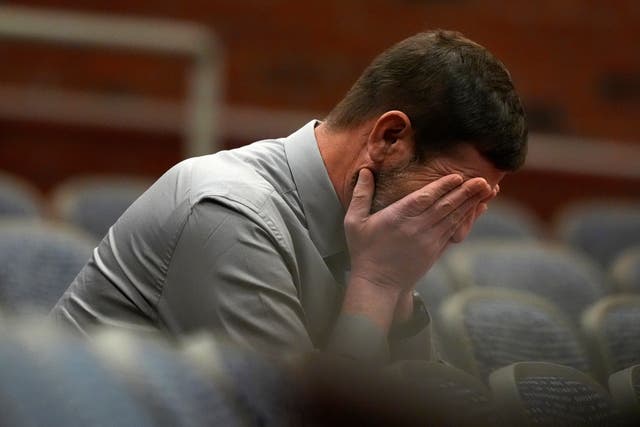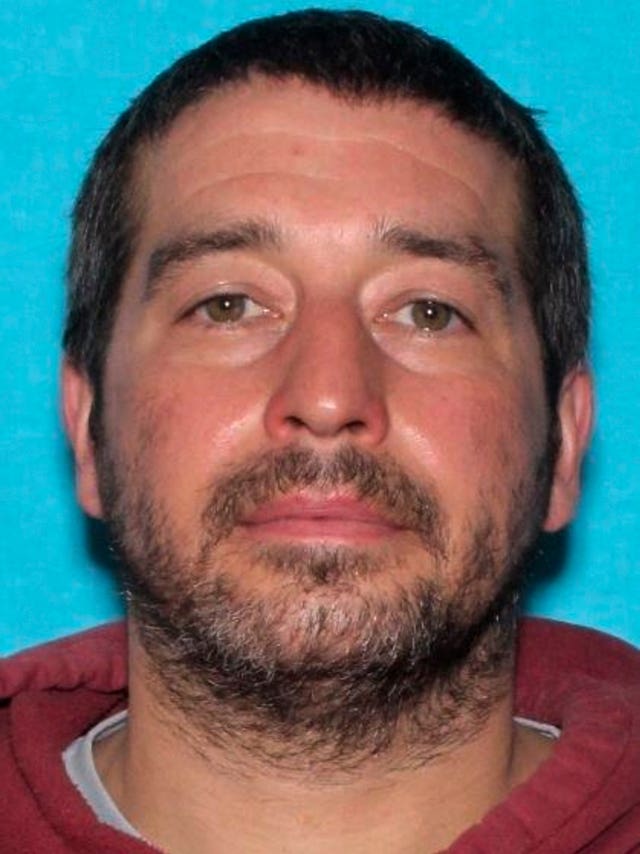
An Army reservist and friend of the gunman behind Maine’s deadliest mass shooting testified on Thursday about his friend’s mental decline, describing publicly for the first time the warning he issued a month before the tragedy unfolded.
Sean Hodgson texted leaders of his reserve unit six weeks before the shooting that left 18 people dead and 13 wounded, telling them to change the passcode to the gate at their Army Reserve training facility and arm themselves if Robert Card showed up.
Mr Hodgson told a panel investigating the mass shooting on Thursday that he issued the warning to superiors after Card’s delusional and violent behaviour spiralled and ended with Card punching him in the face.

“I said, ‘Just so you know, I love you. I’ll always be there for you. I won’t give up on you.’ He had that blank stare on his face. It was a dead stare, and he drove away,” Mr Hodgson recounted as his friend left him at a gas station.
The attacks happened six months ago on October 25 when Card opened fire at a bowling alley and a bar in Lewiston, two locations where he held a delusional belief that people were talking about him behind his back. Two days later, the 40-year-old reservist was found dead of a self-inflicted gunshot wound.
Mr Hodgson told superiors on September 15: “I believe he’s going to snap and do a mass shooting.”
But it was not just Mr Hodgson who was worried about Card. Several other reservists witnessed his deterioration during training last summer. That led to a two-week stay in hospital in July for Card, months after relatives warned police he had grown paranoid and that they were concerned about his access to guns.
The failure of authorities to remove Card’s weapons in the weeks before the shooting has become the subject of a months-long investigation in the state, which also has passed new gun safety laws since the tragedy.
In an interim report released last month, an independent commission launched by governor Janet Mills concluded that the Sagadahoc County sheriff’s office had probable cause under Maine’s “yellow flag” law to take Card into custody and seize his guns.
It also criticised police for not following up with Mr Hodgson about his warning text. A final report is expected this summer.

On Thursday, Mr Hodgson said he warned of a mass shooting because Card threatened multiple members of the unit with violence and that his threats and delusions were escalating. And he had access to guns.
“The way he was behaving was very threatening. It was escalating. The totality of the circumstances, the events leading to that moment, I was pretty convinced he was going to cause harm,” he said.
Another reservist, Daryl Reed, testified he witnessed Card’s mental and physical decline first-hand, seeing a “normal guy” who successfully traded stocks and loved hunting and the outdoors become increasingly paranoid and believing others were calling him a paedophile.
Card also acquired a thermal scope with a laser range finder that he said cost 10,000 dollars, and he demonstrated how it could be used to detect animals, including at night, Mr Reed said.
He added that fellow reservists became concerned that Card could become a danger to colleagues. They were surprised, several testified, when Card was released from a psychiatric hospital after only two weeks.
In an exclusive series of interviews in January, Mr Hodgson told The Associated Press he met Card in the Army Reserve in 2006 and that they became close friends after both divorced their spouses around the same time. They lived together for about a month in 2022, and when Card was taken to hospital in New York in July, Mr Hodgson drove him back to Maine.

Growing increasingly worried about his friend’s mental health, Mr Hodgson warned authorities after Card started “flipping out” after a night of gambling, pounding the steering wheel and nearly crashing multiple times. After ignoring his pleas to pull over, Card punched him in the face, Mr Hodgson said.
“It took me a lot to report somebody I love,” he said. “But when the hair starts standing up on the back of your neck, you have to listen.”
Some officials downplayed Mr Hodgson’s warning, suggesting he might have been drunk because of the late hour of his text. Army Reserve Captain Jeremy Reamer, the commanding officer of the reserve unit, described him as “not the most credible of our soldiers” and said his message should be taken “with a grain of salt”.
Mr Hodgson said he struggles with post-traumatic stress disorder and alcohol addiction but said he was not drinking that night and was awake because he worked nights and was waiting for his boss to call. “I grieve every day for the many lives that are lost for no reason and those that are still affected today,” he told the AP earlier this month.
Cara Cookson, director of victim services for the Maine Office of the Attorney General, also testified on Thursday and described through tears the daunting task of responding to the enormity of the tragedy with a “patchwork of resources”.
On Thursday evening, the Maine Resiliency Centre, which provides support to people affected by the killings, held a six-month commemoration event that drew several hundred people to a park in Lewiston.
The names of the 18 people who died were read aloud at the start of the ceremony, and there were 18 empty chairs, each with a candle and a blue heart, honouring the victims.
The governor also acknowledged the anniversary. “Our hearts are still healing, and the road to healing is long, but we will continue to walk it together,” Ms Mills said in a statement.

Enjoy the convenience of having The Sunday Post delivered as a digital ePaper straight to your smartphone, tablet or computer.
Subscribe for only £5.49 a month and enjoy all the benefits of the printed paper as a digital replica.
Subscribe